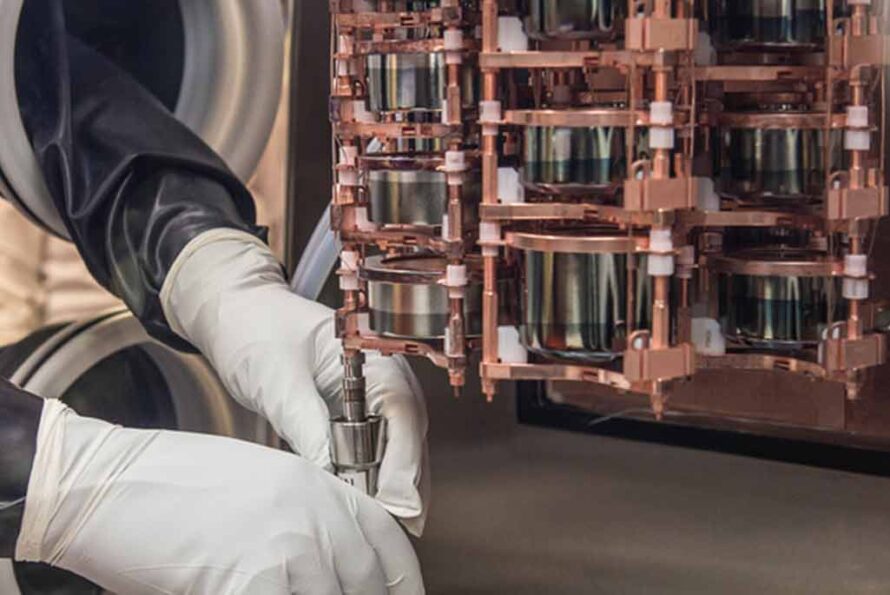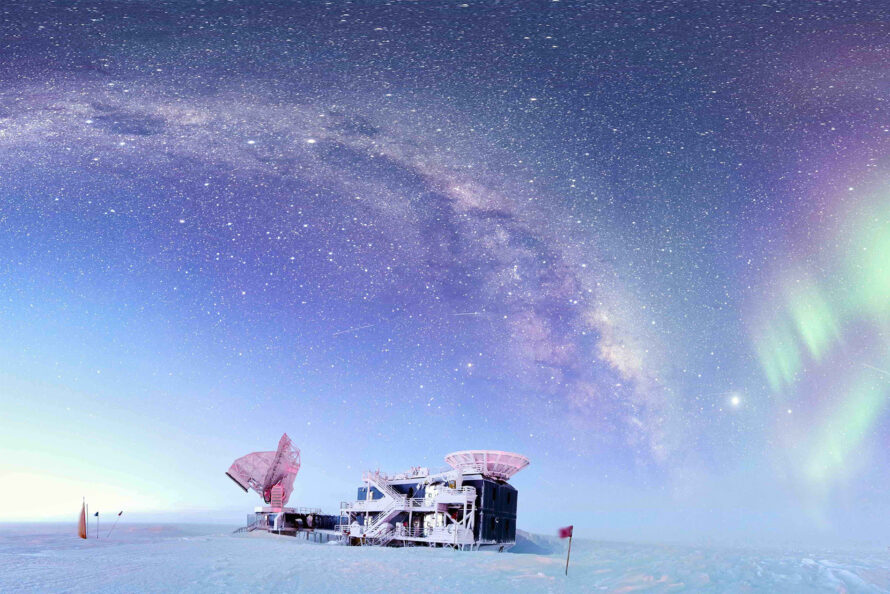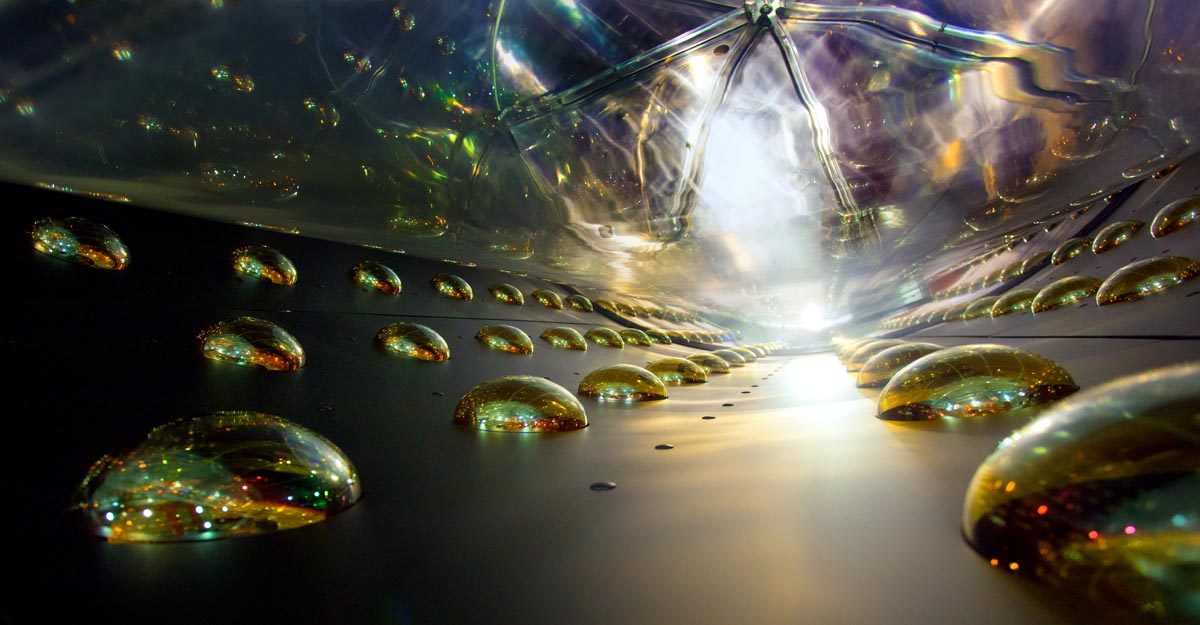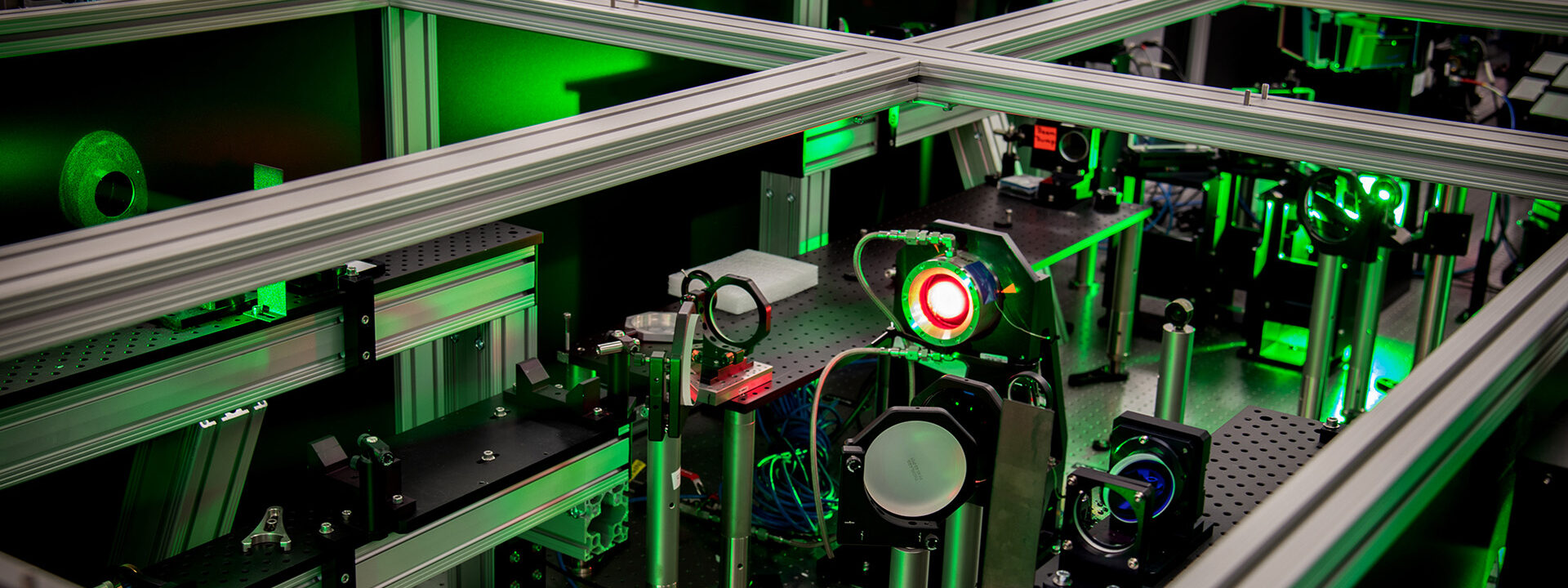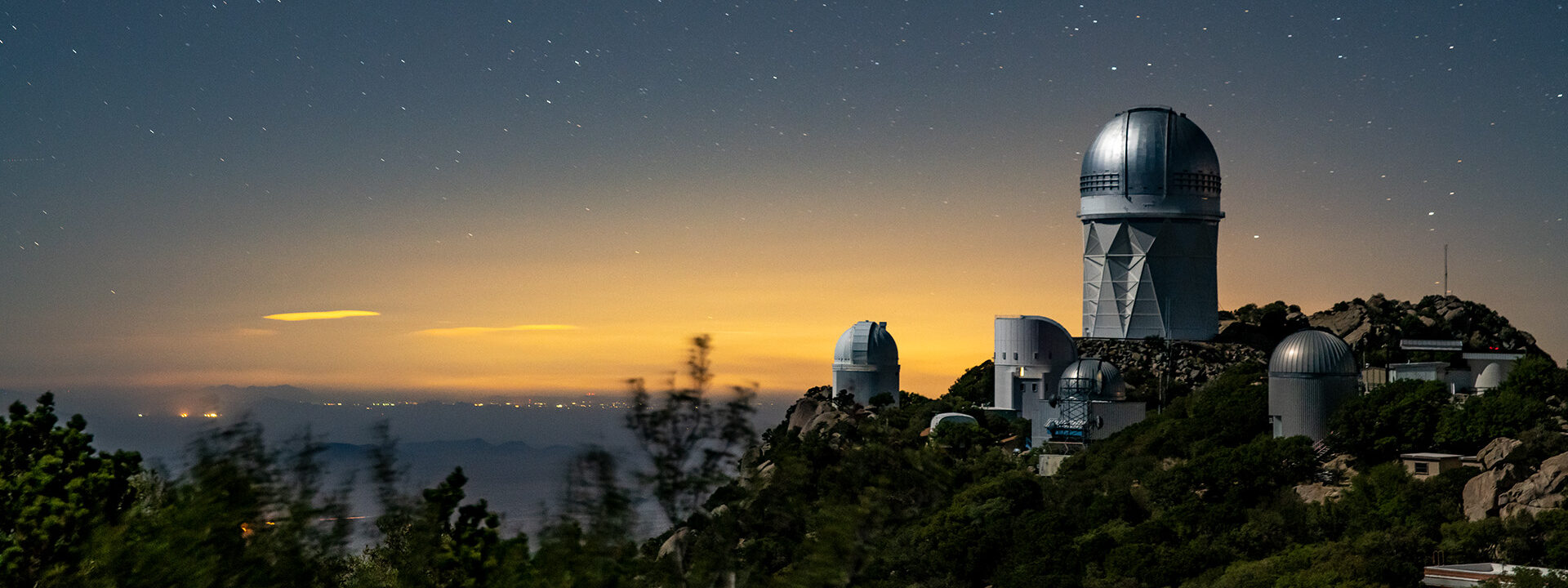
What is dark matter?
Our researchers map its effects through cosmological probes, while leading the LUX-ZEPLIN experiment (LZ) and developing other experiments to directly detect dark matter in the laboratory.
What is dark energy?
Dark energy is driving the acceleration of the universe’s expansion. Our scientists probe it with the Dark Energy Spectroscopic Instrument (DESI), which is creating the largest 3D map of the universe, and with type Ia supernovae.
What happened during inflation?
The CMB-S4 experiment will explore the physical forces or fields hyper-inflating the universe during the first fraction of a second after the Big Bang.
What does the universe tell us about the fundamental particles?
Cosmological probes explore the properties of neutrinos and other elementary particles, complementing accelerator-based experiments.
What’s wrong with gravity?
Growth of structure in the universe is driven by gravity, and DESI maps test general relativity on the cosmological scale.
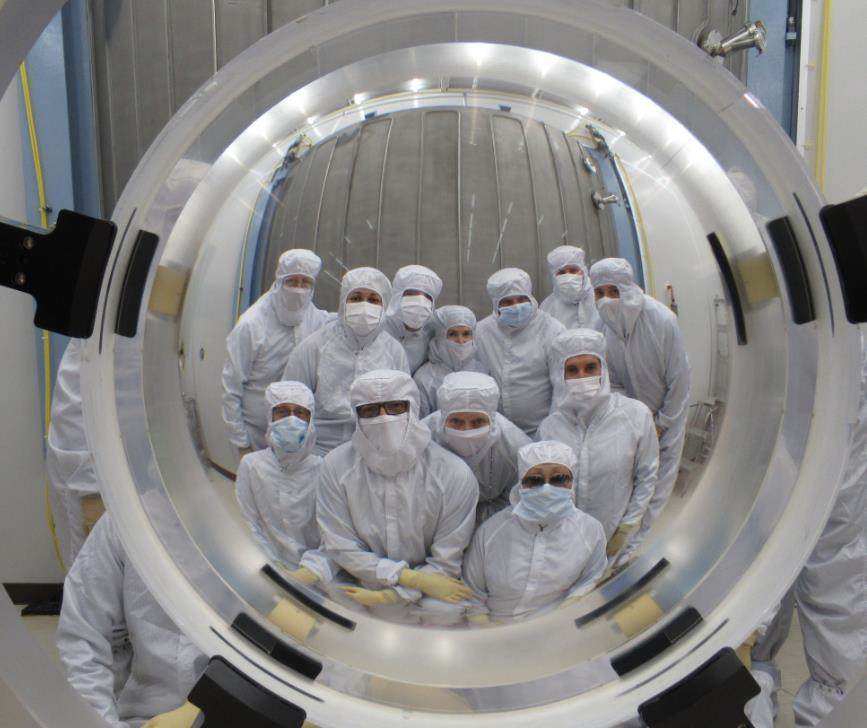
DESI, which is managed by Berkeley Lab, will measure the effect of dark energy on the expansion of the universe.
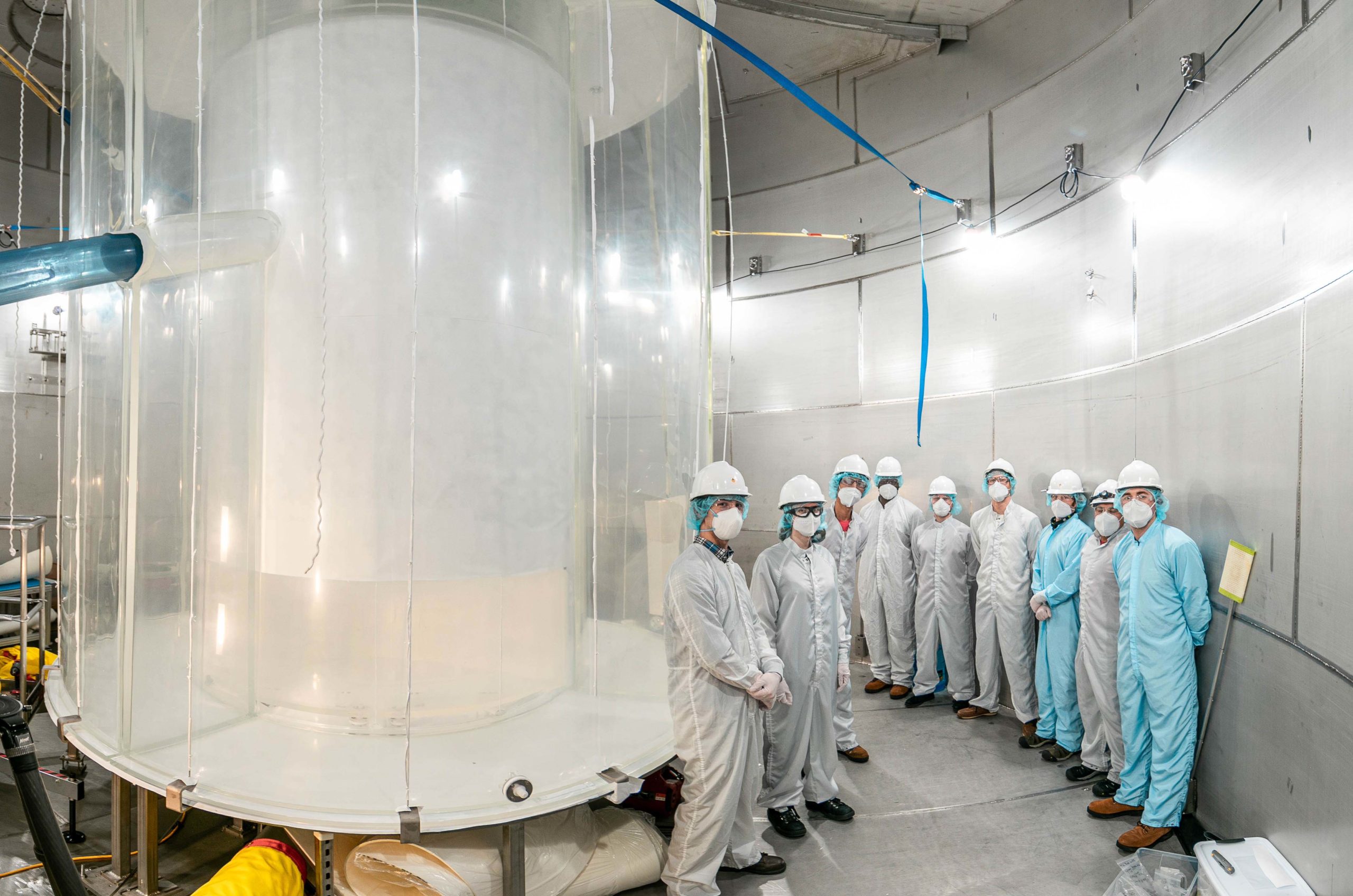
A mile underground, LZ will search for dark matter, which composes 85% of all matter in the universe. LZ is led by Berkeley Lab.
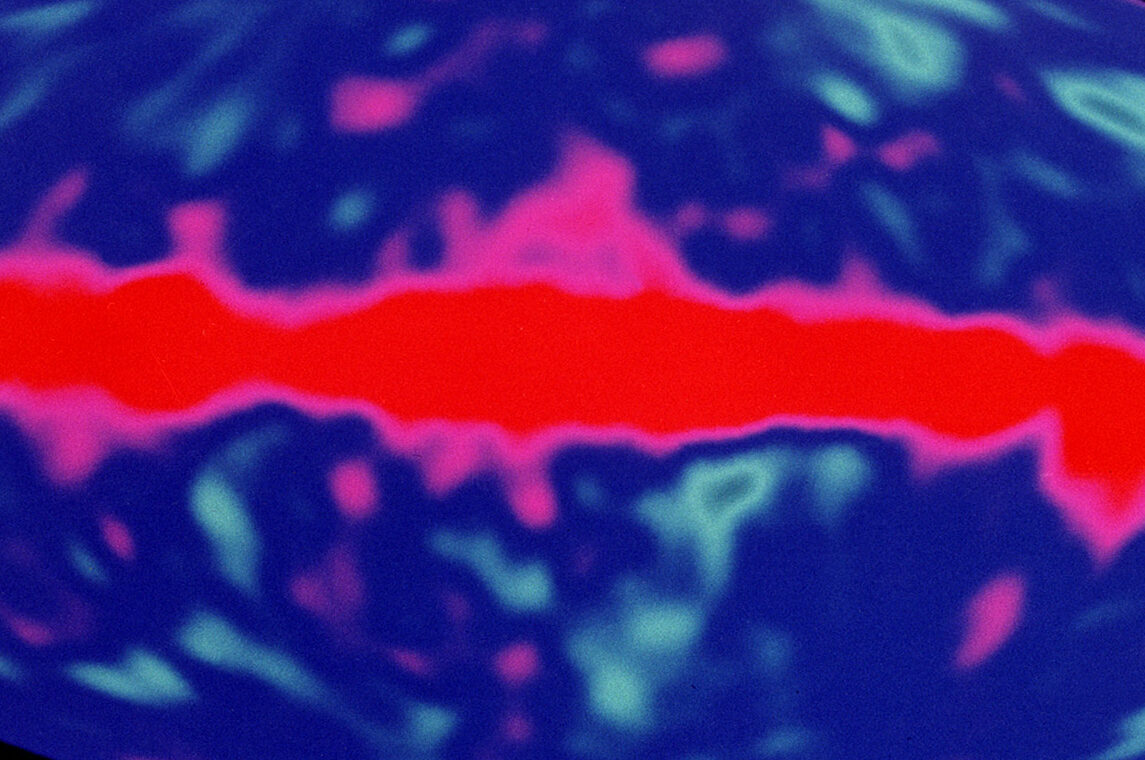
CMB-S4 will provide measurements of the cosmic microwave background at unprecedented precision. Berkeley Lab leads the partnership of institutions that carry out the DOE responsibilities for CMB S-4.
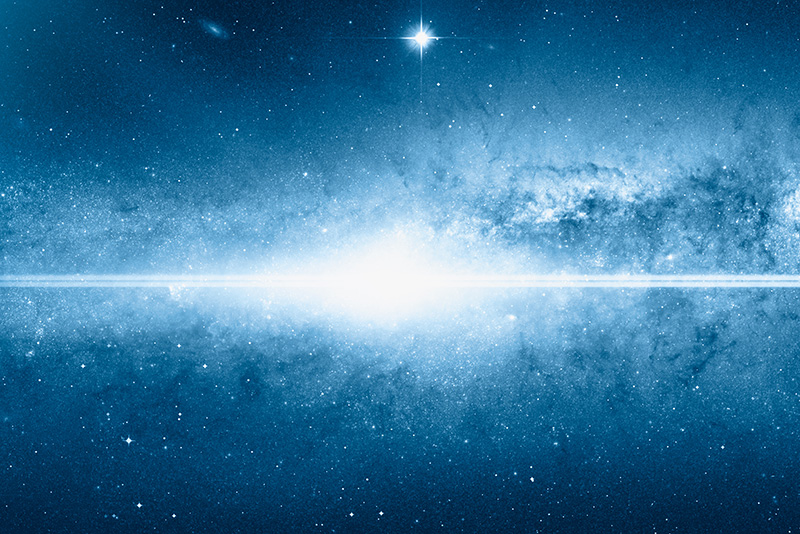
TESSERACT extends the search for dark matter to lower masses, using new detector technologies.
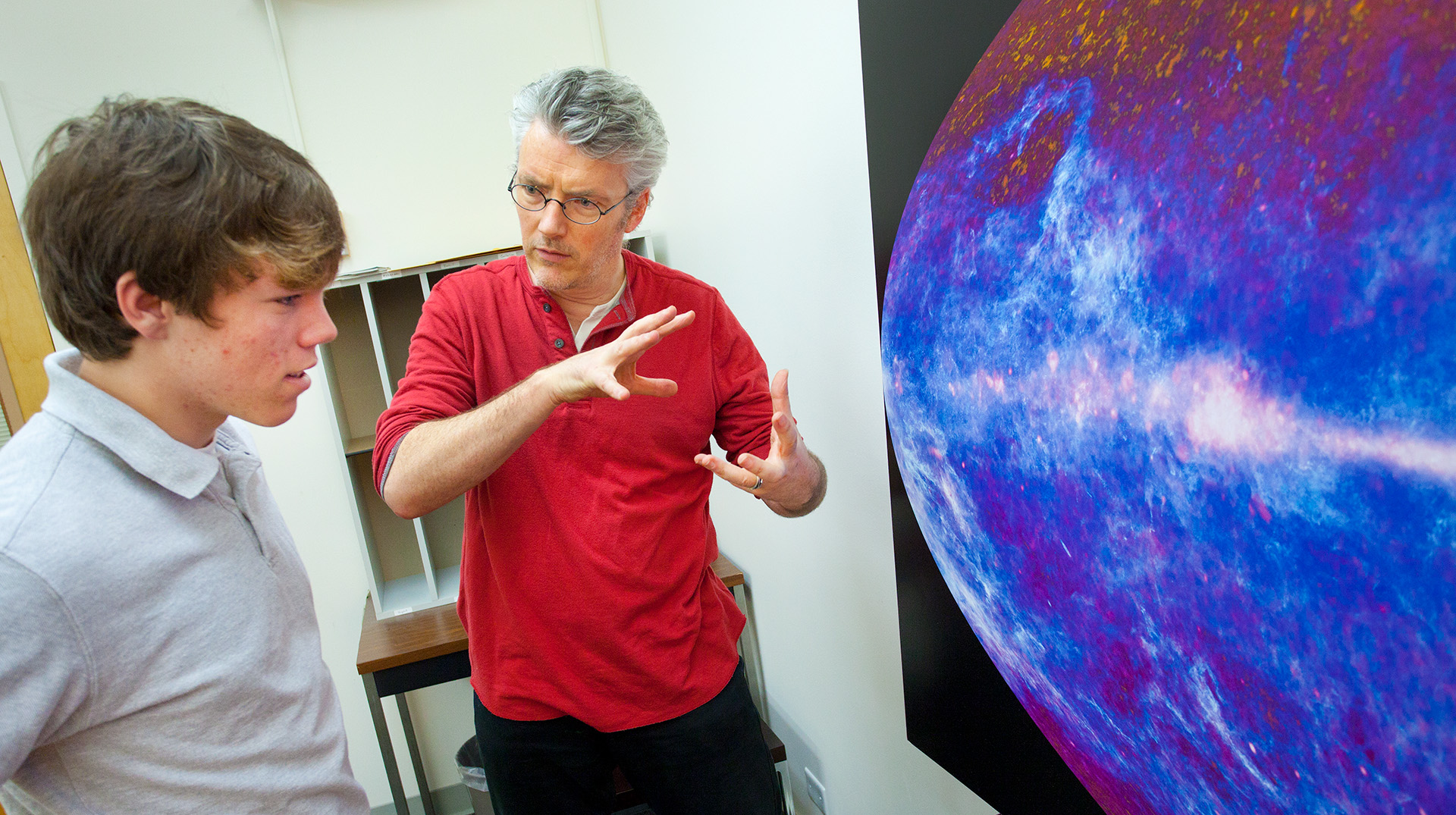
Harnessing supercomputers and modern day artificial intelligence (AI) and machine learning techniques to simulate the universe and analyze data from across the sky.
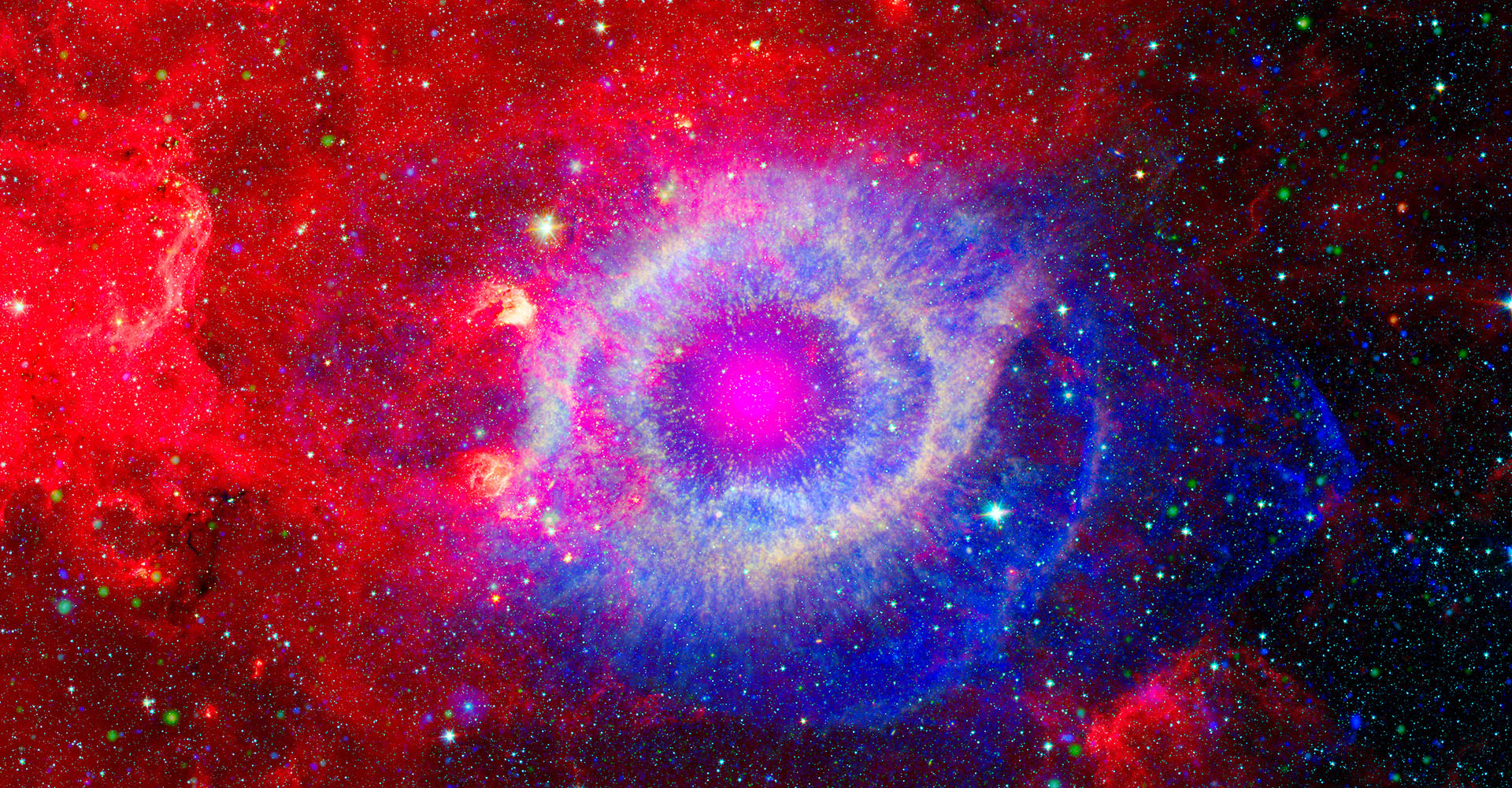
Over two-thirds of all the energy in the universe is dark energy, first discovered by scientists at Berkeley Lab. Its mysteries are still being studied today.
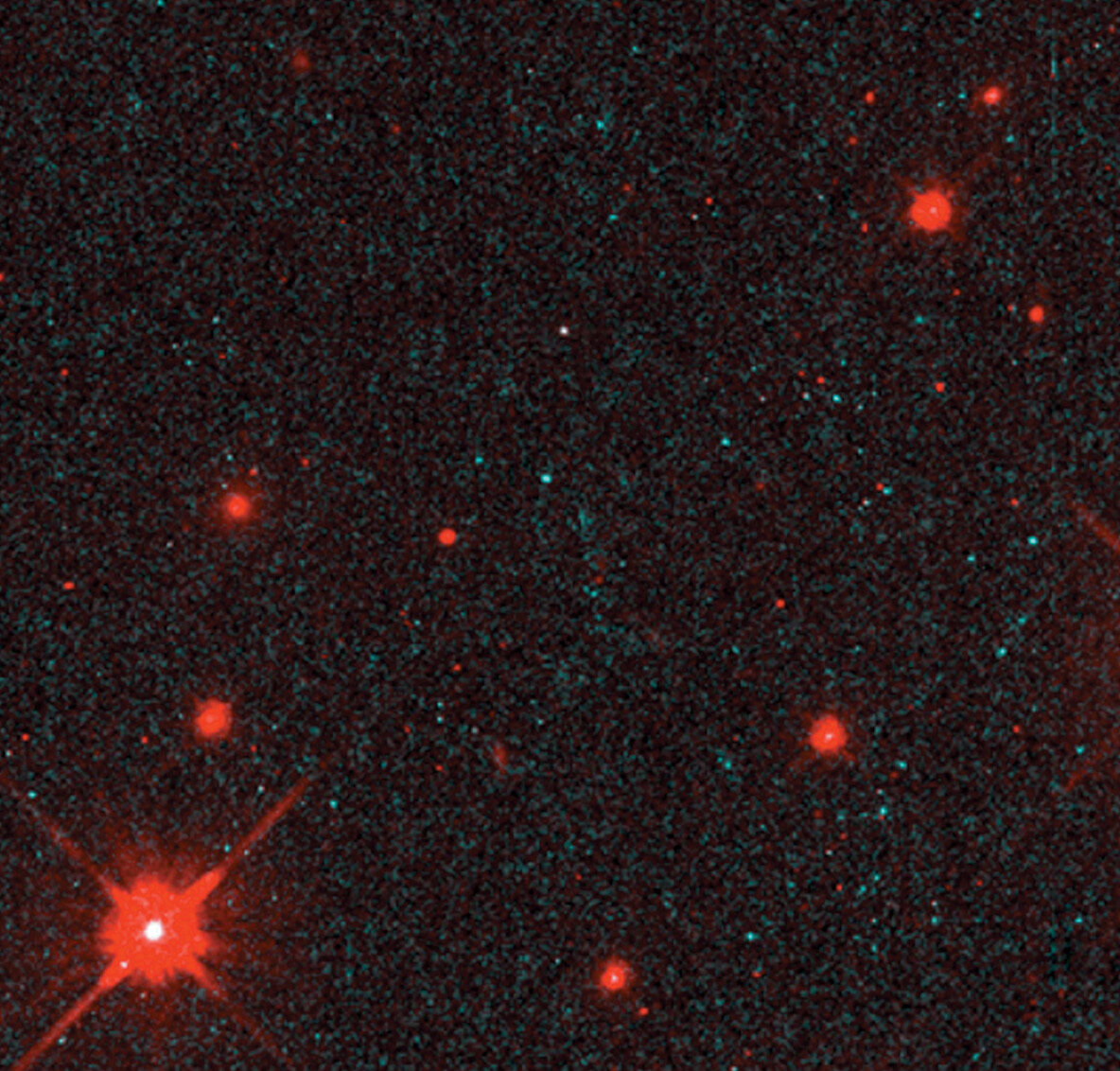
Simulating the most violent and energetic collisions in the universe.
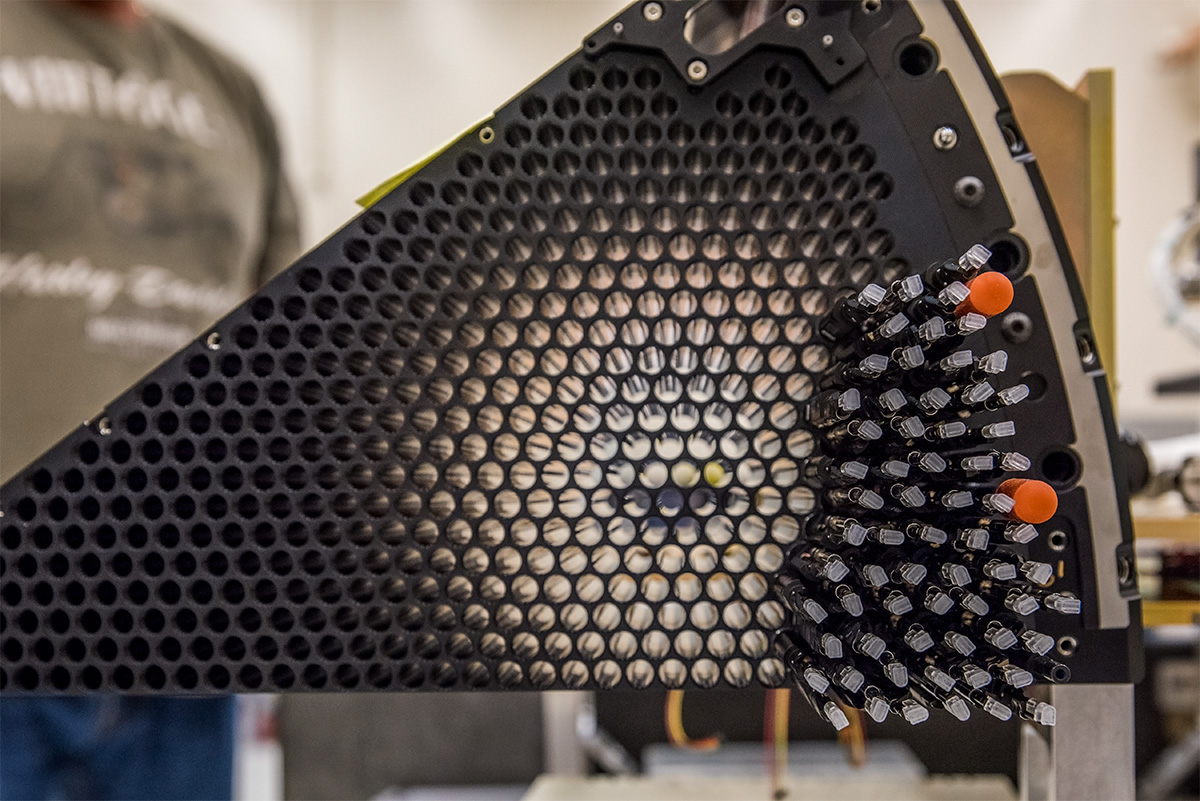
Designing new detectors, materials, and technologies to explore dark matter, dark energy, and the universe.

Michael Levi is a senior scientist in the Physics Division and director of the international DESI collaboration, which aims to measure the effect of dark energy on the expansion of the universe.

Aritoki Suzuki is a staff scientist in the Physics Division. His group designs, fabricates, and tests ultra sensitive detectors and readout electronics for Cosmic Microwave Background, Dark Matter, and QIS experiments by utilizing superconductivity. He is also exploring the early universe by landing a radio receiver on the far side of the moon.

Claire Poppett is a researcher in astrophysics at the UC Berkeley Space Sciences Laboratory who specializes in Astronomical Instrumentation. She is motivated to research and develop new technical solutions necessary to build the next generation of astronomical instruments in order to answer the big questions about our universe.
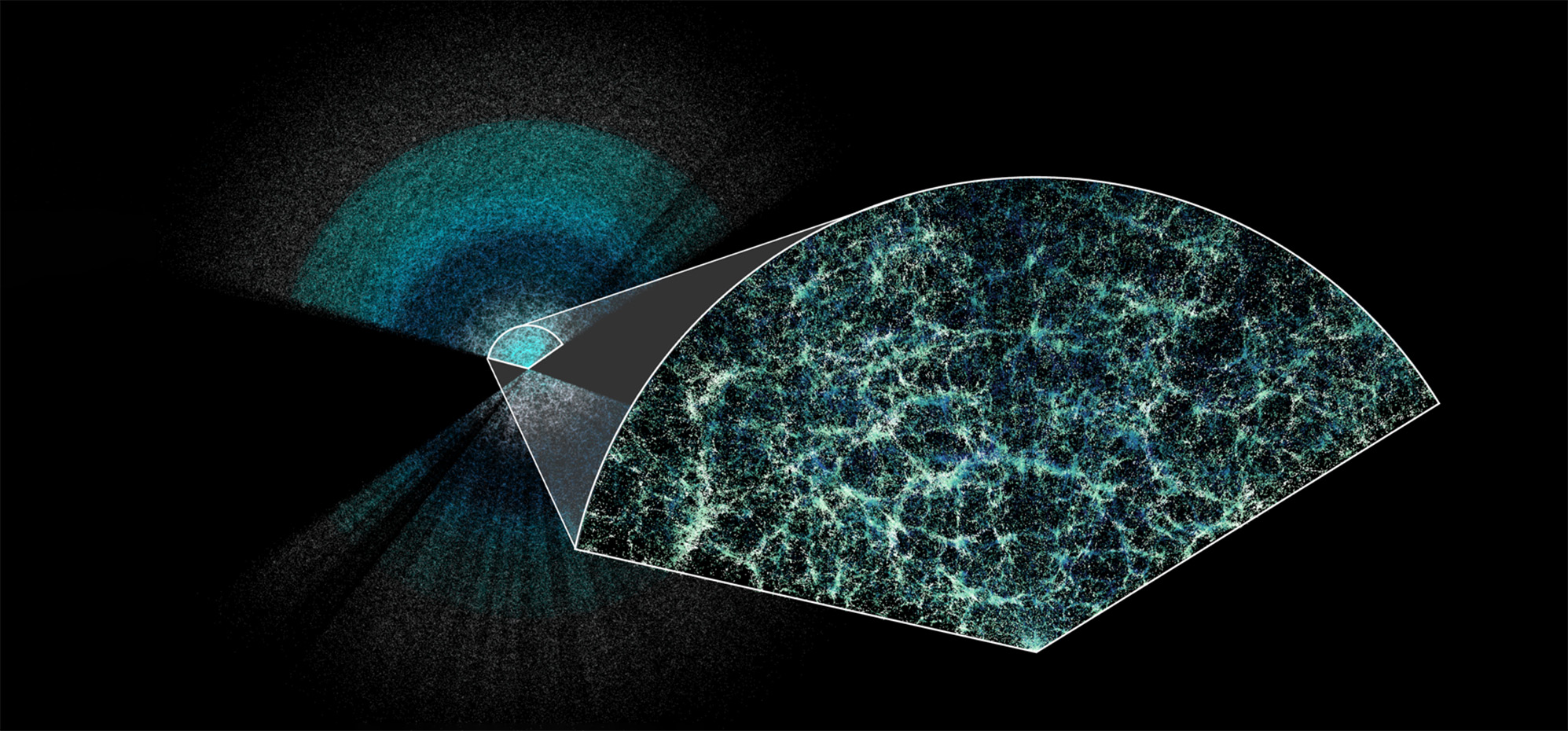

Researchers have used the Dark Energy Spectroscopic Instrument to make the largest 3D map of our universe and world-leading measurements of dark energy, the mysterious cause of its accelerating expansion.
In this episode, we speak with Nobel Laureate Saul Perlmutter (the co-discoverer of dark energy) and rising astrophysics instrumentation scientist Claire Poppett about what we know so far, and how new technology could finally shed (metaphorical) light on this fundamental mystery.

